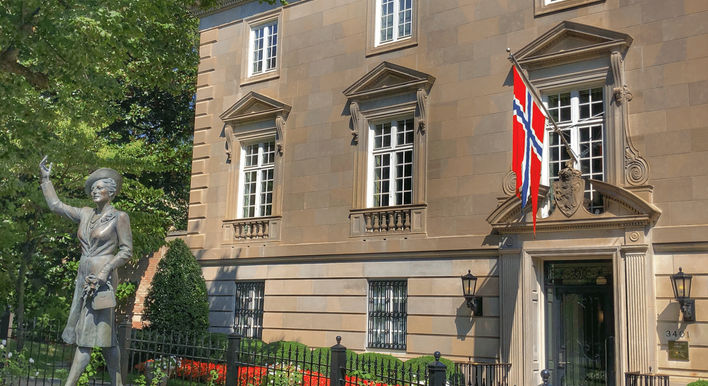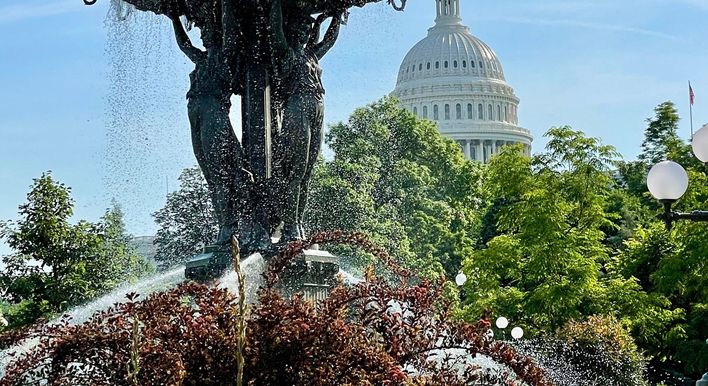This statue of James Garfield welcome Capitol Hill visitors arriving by bus. If anyone remembers Garfield, they know him as the president who was assassinated and died 8 months into his term. But why would a president with such a short tenure be remembered with a statue like this is such a prominent place? The answer is that there’s a lot more to Garfield than just his premature demise.
A tour we think you'll love
The first thing many noticed about Garfield was he had a large head. Fredrick Douglass called him a 3-storied headed man.
Garfield was a teacher, a soldier, a preacher, and a politician. Sometimes all at once.
He grew up poor in what was then called the Western Reserve which is near Cleveland, Ohio. Raised by his widowed mother, at 16 he worked on the Erie Canal handling the mules that pulled the barges. He worked his way through Williams College and was elected to the state senate.
Garfield joins the army when the Civil War breaks out and was appointed a general. And early on he realized that in many respects, the war was going to be the easy part. His time in the South let him see first-hand the insidious nature of White supremacy and repression in those states. Even before there was a thing called Reconstruction, Garfield knew it was going to be tough.
A Republican, he was elected to the House nine times. He was a great orator and served as a leader of his party. He was a supporter of the gold standard and supported a strong approach to Reconstruction of the South that protected former enslaved people.
He also published a proof of the Pythagorean theorem.
In Garfield’s time every government employee from the secretary of State to the postmaster in a small town in the middle of nowhere was a political appointment. That meant that politicians appointed government employees. This was called the spoils or patronage system, and it was rife with corruption.
Garfield doesn’t like the patronage system, but like every politician, he does uses it to his advantage. He and his fellow Republicans make several attempts to institute a civil service. And when he’s sworn in as president, he’s inundated with job seekers. It drives him crazy.
And one unsuccessful job seeker assassinates Garfield. Charles Guiteau, most
likely suffering from schizophrenia, who is upset that he’s been turned down for government jobs, shoots Garfield a DC train station, which is now the site of the National Gallery of Art. Garfield lingers for weeks before he dies.
Garfield got along with everyone in Washington. You’d never hear him speak disparagingly of someone. Even those he adamantly disagreed with. He admitted to a friend, “I’m not a good hater.”
The sculptor is John Quincy Adams Ward, who was a friend of Garfield. He also did the statue of Gen Thomas Scott in Scott Circle.
I like that when you arrive at the Hill you’re greeted by Garfield. He served nearly 20 years here. And you can’t but wonder how the post-war South would have been different had he lived. And it’s good to be reminded that there was a political leader who may have disagreed with you but was never disagreeable.






